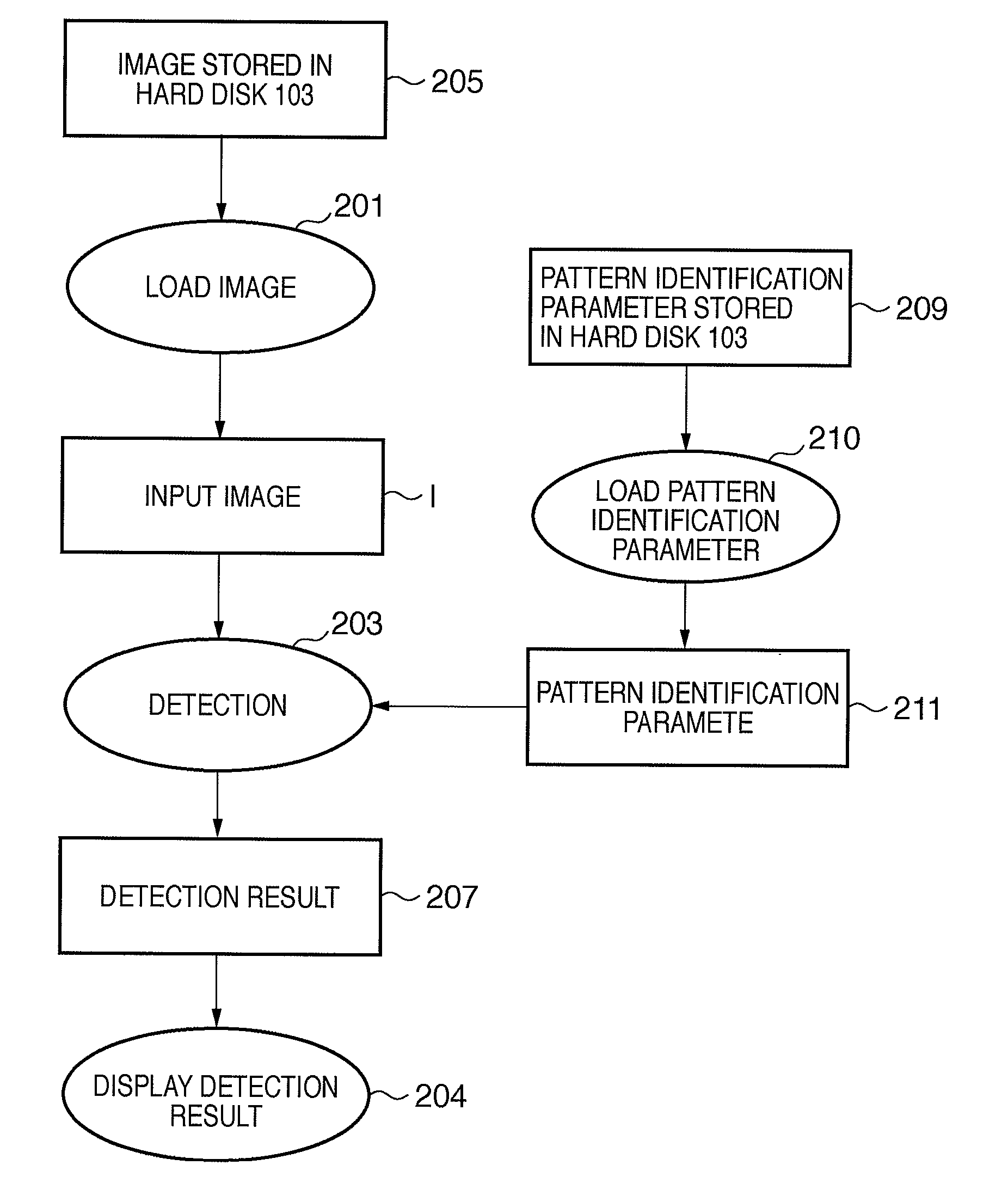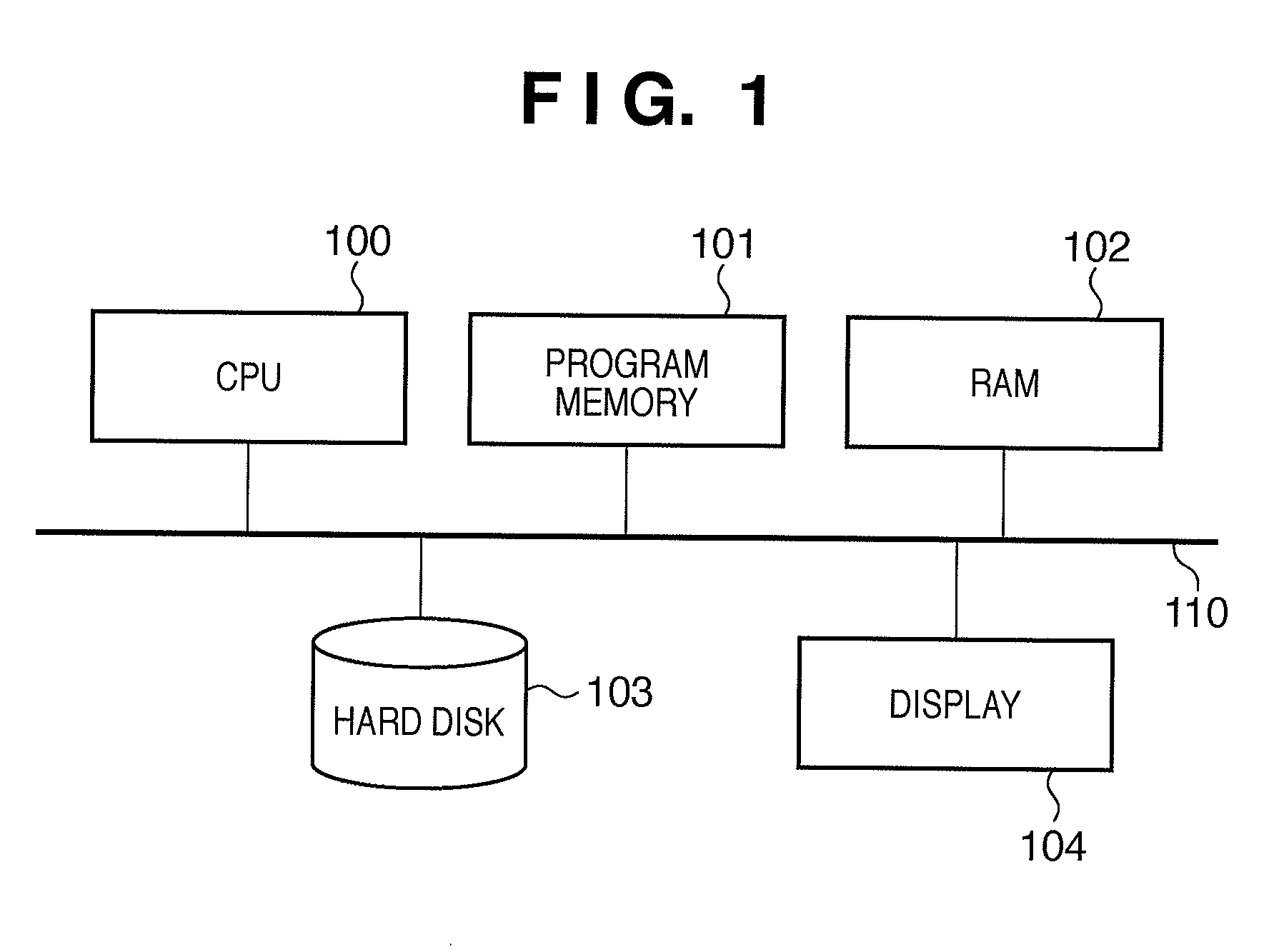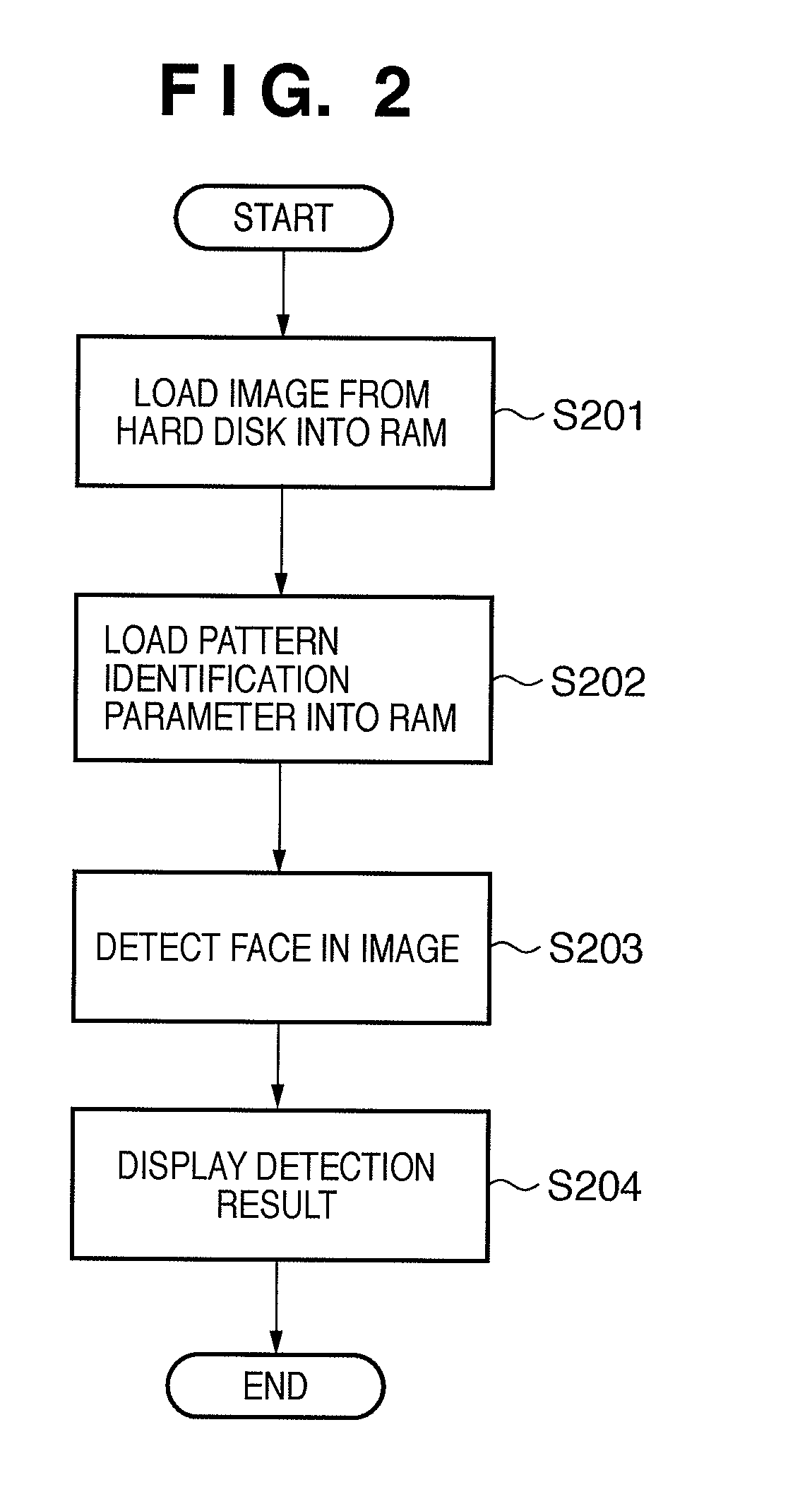Pattern identification method, parameter learning method and apparatus
a parameter learning and pattern identification technology, applied in knowledge representation, instruments, computing models, etc., can solve problems such as unsatisfactory conventional techniques as described above, and achieve the effect of high speed and high accuracy
- Summary
- Abstract
- Description
- Claims
- Application Information
AI Technical Summary
Benefits of technology
Problems solved by technology
Method used
Image
Examples
embodiment 1
[0055]Embodiment 1 illustrates an example of an information processing apparatus that determines whether or not an input image includes a face. In order to simplify the description of the present embodiment, it is assumed that, if a face is included in inputted images, the face has a predetermined size and is arranged at a substantially center position, as in passport photographs. It is, of course, possible to detect a face of any size that is located at any position by scanning or enlarging / reducing an image.
[0056]FIG. 1 is a block diagram used to illustrate an example of the hardware configuration of an information processing apparatus according to Embodiment 1. In FIG. 1, reference numeral 100 denotes a CPU (central processing unit), which executes an information processing method described in the present embodiment in accordance with a program. Reference numeral 101 denotes a program memory, which stores programs that are executed by the CPU 100. Reference numeral 102 denotes a ...
embodiment 2
[0080]Embodiment 2 illustrates an example of an information processing apparatus that detects an object having a specific texture from an inputted image. Unlike Embodiment 1, in Embodiment 2, an object to be detected may not be located in a predetermined location of an input image. Furthermore, in Embodiment 1, a set of rectangles groups needs to be determined in advance, whereas in Embodiment 2, rectangles groups that are used by respective nodes for identification processing are automatically generated by preparing only rectangles that serve as candidates for elements, and setting the number of rectangles included in a single rectangles group. For the sake of simplicity, Embodiment 2 describes a binary tree, but it is easily conceivable from Embodiment 1 that the present embodiment can be applied to a multiway tree.
[0081]The information processing apparatus according to Embodiment 2 has the same hardware configuration as that of Embodiment 1 (FIG. 1). Accordingly, reference should...
PUM
 Login to View More
Login to View More Abstract
Description
Claims
Application Information
 Login to View More
Login to View More - R&D
- Intellectual Property
- Life Sciences
- Materials
- Tech Scout
- Unparalleled Data Quality
- Higher Quality Content
- 60% Fewer Hallucinations
Browse by: Latest US Patents, China's latest patents, Technical Efficacy Thesaurus, Application Domain, Technology Topic, Popular Technical Reports.
© 2025 PatSnap. All rights reserved.Legal|Privacy policy|Modern Slavery Act Transparency Statement|Sitemap|About US| Contact US: help@patsnap.com



